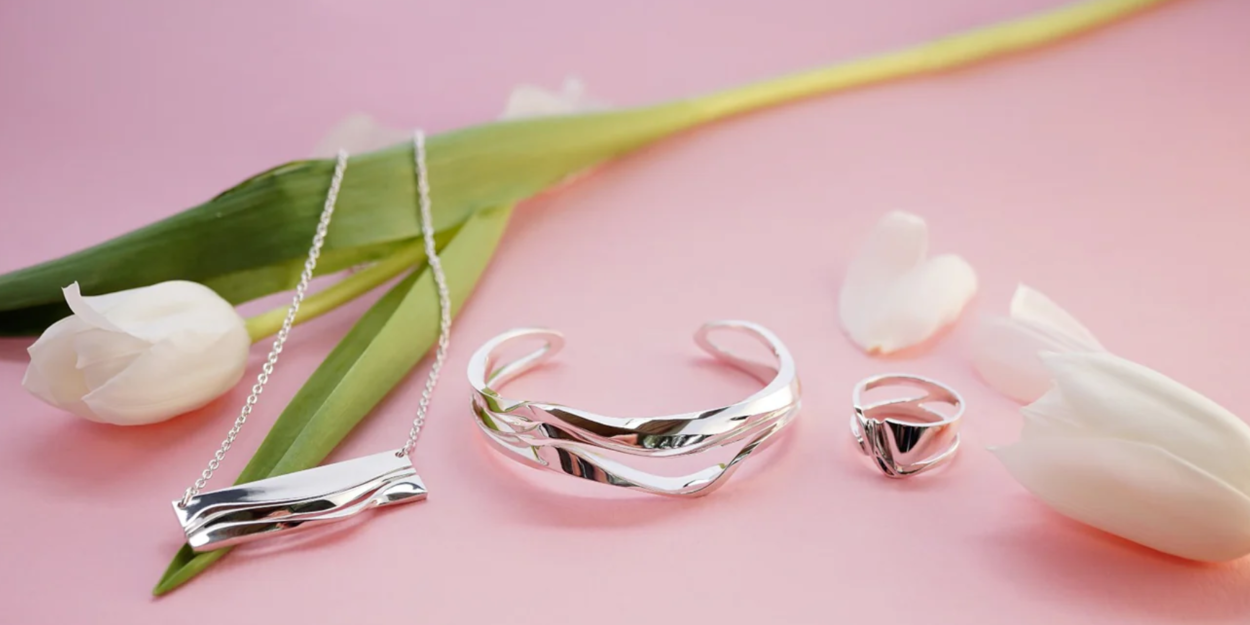Banner Image Courtesy of LACE by JennyWu
From independent artisans crafting bespoke engagement rings to luxury houses reimagining haute joaillerie, 3D printing has democratized access to sophisticated manufacturing capabilities once reserved for major production facilities. Today's jewelry makers navigate an ecosystem of competing technologies, materials, and service providers, a complexity that makes informed decision-making more critical than ever.
The Foundation Era: Early Adoption
The dawn of 3D printing in jewelry emerged from an unlikely convergence of dental technology and industrial design. Pioneering companies like Solidscape introduced wax-based 3D printers specifically targeting jewelry applications, offering 6-micron layer resolution that could capture the intricate details jewelers demanded. Early adopters faced significant challenges, such as very high machine costs, limited casting wax materials, and a long learning curve.
Yet visionary jewelers recognized the potential. Studios began experimenting with digital workflows, discovering they could iterate complex designs in days rather than weeks. The technology's precision enabled previously impossible geometries, including interlocking components, hidden mechanisms, and organic lattices that would challenge even master craftsmen.
By 2008, service bureaus emerged to democratize access, allowing independent designers to upload files and receive cast-ready wax models within days. This foundation era established 3D printing not as a replacement for traditional techniques, but as a powerful complement that expanded creative possibilities.
Material Breakthroughs That Changed Everything
The material revolution between 2010 and 2020 transformed 3D printing from a prototyping tool into a direct production method. Castable resins emerged as game-changers, offering faster print times and cleaner burnout than traditional waxes while maintaining exceptional detail fidelity. EnvisionTEC's development of biocompatible resins enabled temporary try-on pieces, allowing customers to wear and evaluate designs before final production.
The real breakthrough came with direct metal printing. Precious Metal Clay (PMC) adaptations for 3D printing allowed artists to create silver and gold pieces without casting. By 2015, Selective Laser Melting (SLM) machines could print directly in platinum, 18k gold, and sterling silver, achieving densities exceeding 99.9%. Material costs plummeted as competition increased, with castable resins dropping from $500 to $150 per liter, making small-batch production economically viable.
Innovative materials like ceramic-filled resins and color-changing polymers opened entirely new design categories. These advances shifted the conversation from "Can we 3D print this?" to "What's the best method for our specific needs?".
The 3D Printing Technology Landscape
Today's jewelry makers choose from five primary 3D printing technologies, each with distinct advantages.
Stereolithography (SLA) dominates the castable model market; Digital Light Processing (DLP) accelerates production with full-layer curing; Multi Jet Fusion (MJF) remains the gold standard for ultra-high detail; Selective Laser Melting (SLM) excels at intricate filigree work, and Electron Beam Melting (EBM) handles larger, structural pieces efficiently; Binder jetting emerges as the volume production solution, printing hundreds of pieces simultaneously with minimal support structures.
The technology landscape continues to fragment as manufacturers optimize for specific applications.
Design and Workflow Revolution
3D printing catalyzed a fundamental shift in jewelry design methodology, replacing sketchbooks with parametric modeling software and hand-carved waxes with algorithmic generation.
The workflow revolution extends beyond design into production planning. Modern jewelry studios maintain digital inventories, printing pieces on demand rather than holding physical stock. Mass customization becomes economically feasible; customers can modify ring widths, stone settings, or engraving details without requiring new molds.
Cloud-based platforms facilitate global collaboration, reducing time-to-market from months to days while enabling design complexity that pushes artistic boundaries.
Sustainability
Environmental consciousness drives the latest evolution in 3D printed jewelry, addressing both material sourcing and production efficiency. Additive manufacturing inherently reduces waste as it uses only the necessary material rather than subtracting from larger blocks.
Recycled precious metal powders perform identically to virgin materials in SLM systems, creating closed-loop production cycles. Bio-based resins derived from plant oils replace petroleum-based polymers for castable models, biodegrading completely after use. Sustainability is no longer a side benefit; it’s a competitive differentiator, especially when customers expect transparency about sources, waste, and energy use.
Compare Prices of Jewelry at Hi3DP
When choosing 3D printing for jewelry, cost depends on the technology, material, and finishing requirements. Hi3DP makes this process simple by offering a full spectrum of professional services, so customers can compare options and select the best fit for their design and budget.
Technologies and Materials Available at Hi3DP
• FDM (Fused Deposition Modeling): Affordable plastic prototyping for conceptual models or try‑on pieces. Best for early design validation.
• SLA (Stereolithography): High‑resolution resin printing is ideal for castable masters with smooth surfaces and fine detail.
• SLS (Selective Laser Sintering): Durable nylon and TPU parts for functional prototypes or structural jewelry components.
• MJF (Multi Jet Fusion): Excellent for batch production with consistent quality and faster turnaround.
• SLM (Selective Laser Melting): Direct metal printing in various metals, which is perfect for finished jewelry.
Hi3DP supports jewelry makers with FDM, SLA, SLS, MJF, and SLM services, ensuring you can compare prices across methods and select the most efficient path from prototype to polished masterpiece.














